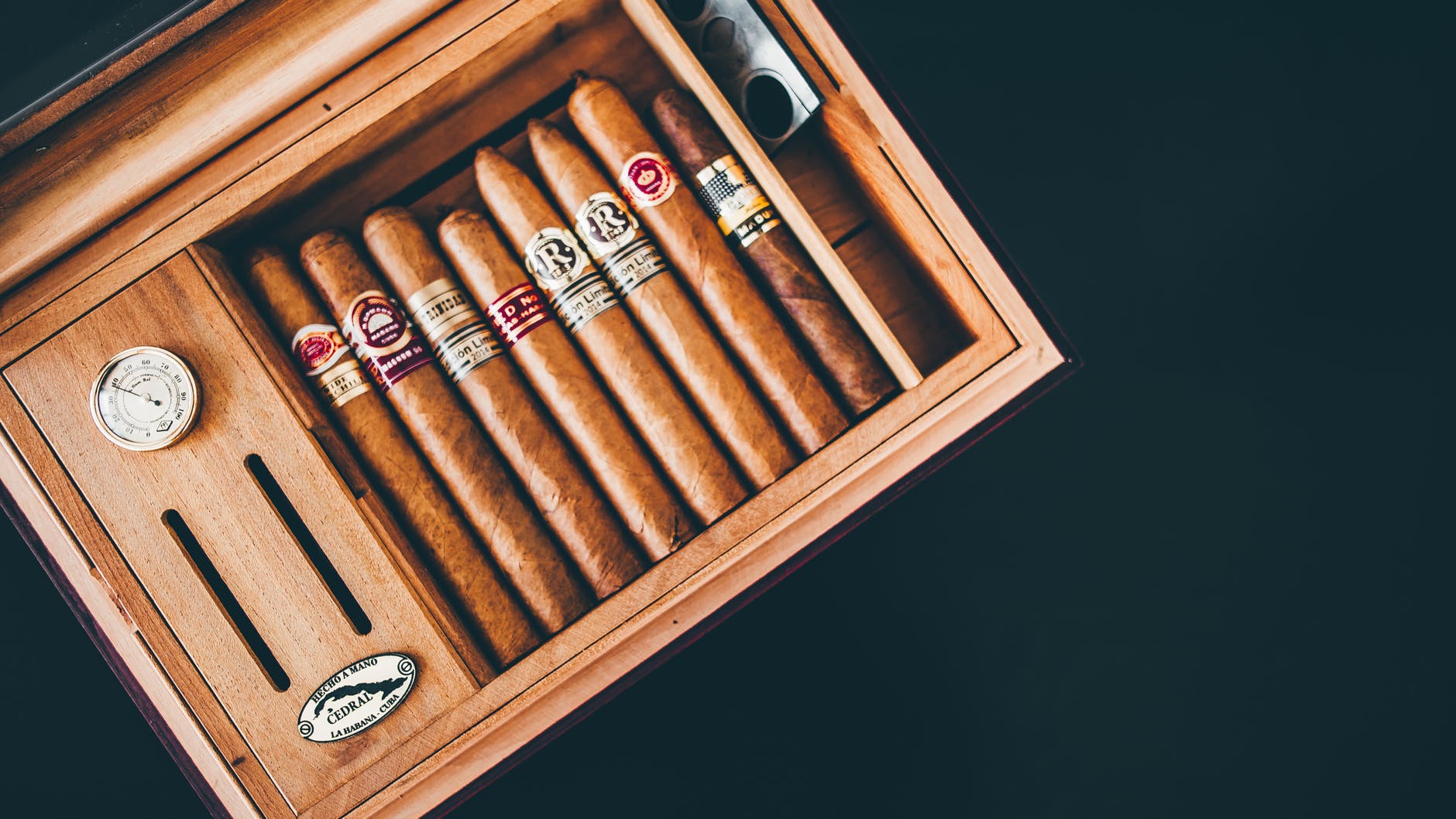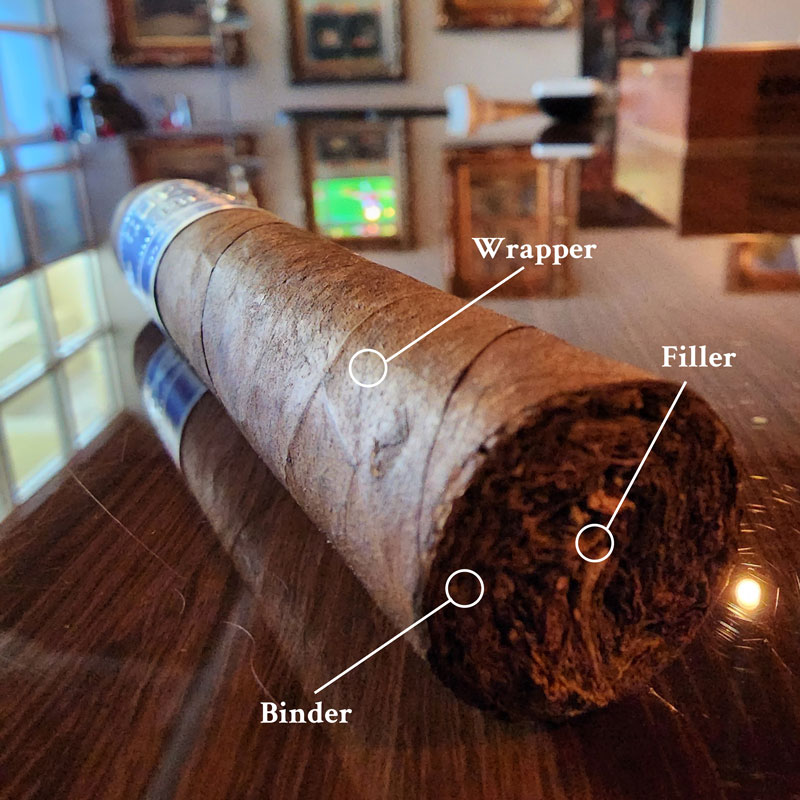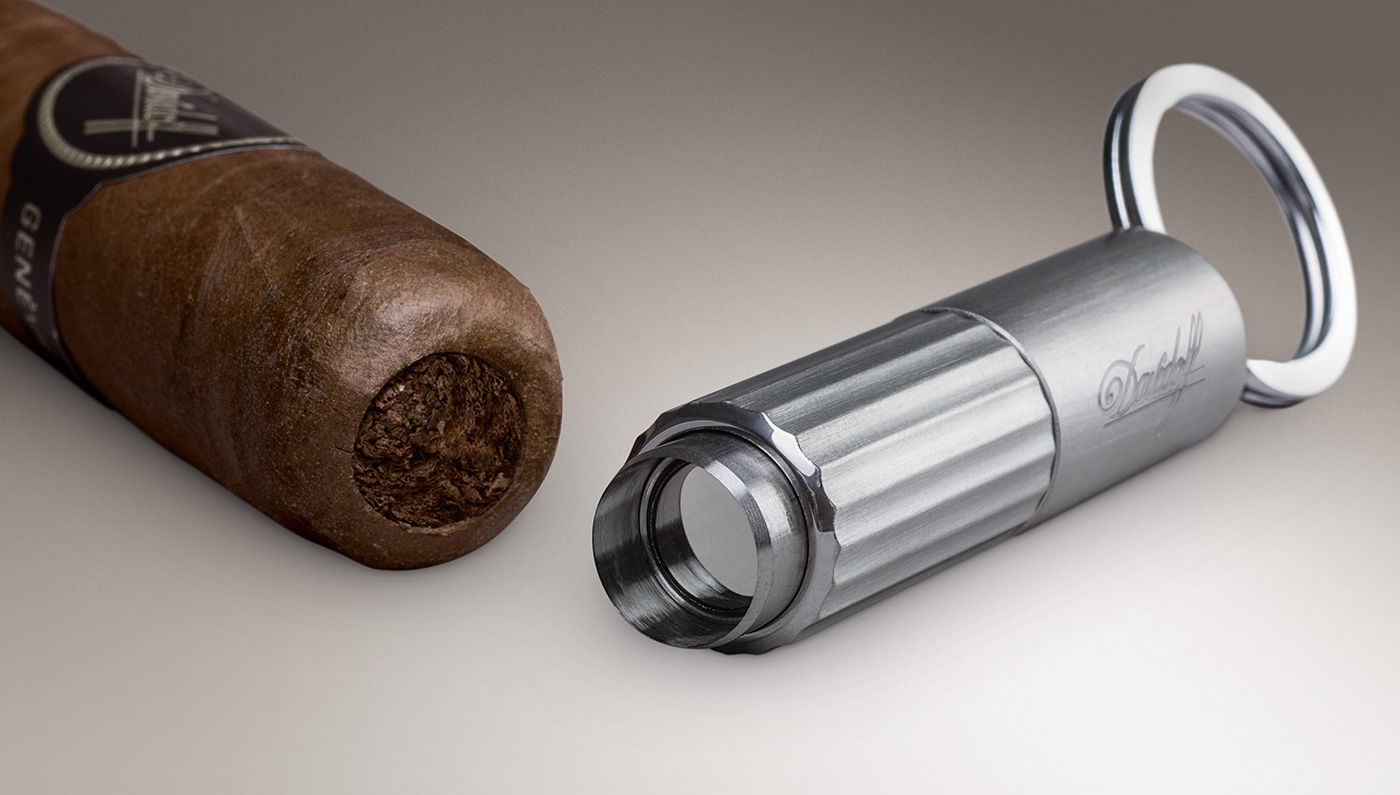Step-by-step Guide How to on Cutting a Torpedo Cigar Cutter for the Perfect Smoke Guillotine
When it comes to enjoying a fine cigar, cutting it properly is essential to ensure a flawless smoking experience. One of the most popula r cigar shapes is the torpedo, which has a pointed cap that needs to be cut properly to maximize the draw and flavor. Here is a step-by-step guide on how to cut a torpedo cigar like a pro.
Step 1: Gather the necessary tools – a cigar cutter and a torch lighter. Make sure your cutter is sharp and clean to ensure a clean cut.
Step 2: Hold the cigar firmly but gently in one hand, making sure not to squeeze it too tightly to avoid damaging the wrapper leaf.
Step 3: Identify the cap of the torpedo cigar, which is the pointed end that needs to be cut.
Step 4: Place the cigar cutter about 1/8 inch above the cap, ensuring that the blades are aligned with the edge of the cap.
Step 5: With a swift and decisive motion, close the cutter in one fluid motion. Do not hesitate or saw back and forth, as this can damage the wrapper.
Step 6: Inspect the cut to ensure it is clean and even. If there is any excess tobacco or if the cut is uneven, you can use the cutter to trim it gently.
Step 7: Once the cigar is properly cut, it is ready to be lit. Use a torch lighter to evenly toast the foot of the cigar, rotating it to ensure an even burn.
Now that you know how to cut a torpedo cigar like a pro, you can confidently enjoy this classic cigar shape and fully savor its rich flavors. Remember, a clean and precise cut is the key to a perfect smoking experience. Happy smoking!
Choosing the Right Torpedo Cigar
When it comes to enjoying a torpedo cigar, choosing the right one can make all the difference in your smoking experience. With so many options available, it can be overwhelming to know where to start. Here are a few tips to help you choose the perfect torpedo cigar:
1. Consider the Strength
One of the first things to consider when choosing a torpedo cigar is the strength. Cigars can range from mild to full-bodied, and it’s important to choose one that matches your preference. If you’re new to smoking cigars, you may want to start with a milder option and gradually work your way up to stronger cigars.
2. Examine the Wrapper
The wrapper of a torpedo cigar plays a crucial role in the flavor and overall smoking experience. Different wrappers can offer different tastes and textures. Connecticut wrappers, for example, tend to be milder and smoother, while Maduro wrappers offer a richer, more robust flavor. Take some time to examine the wrapper and consider what flavors you enjoy before making your selection.
Pro tip: A torpedo cigar with a well-aged, smooth wrapper can enhance the smoking experience.
As you explore the world of torpedo cigars, don’t be afraid to ask for recommendations from experienced smokers or even your local tobacconist. They can provide guidance based on your taste preferences and help you find a torpedo cigar that suits your palate. Remember, the ultimate goal is to find a cigar that you can truly enjoy and savor with each puff.
Happy smoking!
Preparing the Cigar Cutter
Before cutting your torpedo cigar, it is important to prepare your cigar cutter properly. Follow these steps to ensure a clean and precise cut:
- Inspect the cutter: Before using the cigar cutter, carefully inspect it for any damage or debris. Make sure the blades are clean and sharp.
- Open the cutter: Hold the cigar cutter in one hand and use your other hand to slide open the blades. Make sure they open smoothly and fully.
- Position the cigar: Take your torpedo cigar and hold it between your thumb and forefinger. Make sure the end you want to cut is facing up.
- Measure the cut: Place the closed cutter on the cap of the cigar, right above the shoulder. Take a moment to visually measure how much of the cap you want to remove.
- Lock the blades: Once you have positioned the cutter and determined your desired cut, press the blades together until they lock into place. This will ensure a clean and even cut.
By preparing your cigar cutter properly, you are setting yourself up for a successful and enjoyable smoking experience. Remember to always handle your cutter with care and store it in a safe place when not in use.
Inspecting the Cigar
Before starting the cutting process, it is crucial to inspect the torpedo cigar carefully. This step helps ensure that you have a premium-quality, properly constructed cigar that is ready to be enjoyed.
1. Examine the Wrapper: Take a close look at the cigar’s wrapper. It should be smooth and tightly wrapped around the cigar, with no visible seams or bumps. If you notice any imperfections or damage to the wrapper, it can affect the smoking experience.
2. Check the Color: A premium torpedo cigar usually has an even and consistent color throughout the wrapper. While color variations are normal, any drastic changes or splotches can indicate an issue with the tobacco leaves or poor craftsmanship.
3. Feel for Firmness: Gently squeeze the cigar between your fingers to feel for firmness. A well-constructed torpedo cigar should feel solid and evenly packed, without any overly soft or hard spots. Inconsistent firmness can affect the burn and draw of the cigar.
4. Smell the Foot: Bring the unlit end of the torpedo cigar to your nose and take a sniff. You should detect a pleasant, rich aroma. If you notice any unusual odors or a strong ammonia smell, it could indicate poor tobacco quality or improper aging.
5. Inspect the cap: The cap is the sealed end of the torpedo cigar that you will be cutting. Make sure it is well-attached and properly applied. A loose or damaged cap can result in an uneven cut and may affect the overall smoking experience.
By thoroughly inspecting the torpedo cigar before cutting, you can ensure that you are about to enjoy a well-crafted cigar that will provide you with a satisfying smoke.
Cutting the Cap
Once you have selected your torpedo cigar, the next step is to cut the cap. The cap is the small piece of tobacco that covers the head of the cigar. It is important to cut the cap properly to ensure a smooth draw and an even burn.
Step 1: Selecting the Right Cutter
There are different types of cutters available for cutting a cigar, but for a torpedo cigar, a straight cut or a V-cut is recommended. A straight cut will create a straight opening on the cap, while a V-cut will create a V-shaped notch.
It is important to use a sharp cutter to avoid damaging the cigar. Dull cutters can crush the cap and ruin the draw.
Step 2: Inspecting the Cap
Before cutting the cap, inspect it for any imperfections or flaws. Look for any cracks, tears, or holes that could affect the draw or cause the cigar to unravel.
If you notice any flaws, it is best to discard the cigar and select a new one.
Once you are satisfied with the condition of the cap, proceed to the next step.
Step 3: Cutting the Cap
Hold the cigar firmly in one hand and the cutter in the other. Place the cutter 1/8 of an inch to 1/4 of an inch from the tip of the cap.
With a swift and firm motion, make the cut. Be careful not to cut too much or too little. Cutting too much can cause the cap to unravel, while cutting too little can result in a tight draw.
It is recommended to make a clean cut in one motion rather than repeatedly cutting the cap. Multiple cuts can damage the cap and affect the overall smoking experience.
After cutting the cap, check the draw by gently blowing through the cigar. It should have a slight resistance, indicating a good draw.
Now you are ready to light up your torpedo cigar and enjoy a smooth and flavorful smoking experience!
Toasting the Foot
Before lighting your torpedo cigar, it is important to toast the foot. This process helps to ensure an even burn and enhances the overall smoking experience.
To toast the foot, follow these steps:
- Hold the cigar at a slight angle, with the foot facing the flame.
- Using a soft flame lighter or a cedar spill, gently apply the flame to the foot of the cigar.
- Rotate the cigar slowly, allowing the heat to evenly distribute across the foot.
- Avoid touching the flame directly to the cigar as it may result in an uneven burn.
- Continue toasting the foot until it is evenly charred.
By toasting the foot, you are preparing the cigar for a more enjoyable smoking experience. This process helps to eliminate any impurities and ensures that the cigar will burn evenly and smoothly.
Remember, take your time when toasting the foot and do not rush the process. This will help set the stage for a relaxing and pleasurable smoke.
Lighting the Cigar
After you have properly cut the end of your torpedo cigar, it is time to light it. Lighting a cigar is an art that requires patience and precision. Follow these steps to ensure a perfect light:
-
Gather Your Supplies
Before you begin, make sure you have all the necessary supplies. You will need a high-quality cigar lighter or wooden matches, a clean ashtray, and your cigar.
-
Toasting the Foot
Hold the cigar horizontally and lightly toast the foot (the open end that you cut) by holding the flame about an inch or so away. Move the cigar in a circular motion, allowing the foot to evenly ignite. Avoid placing the flame directly on the foot, as this can cause uneven burning.
-
Slow and Gentle Puffs
After toasting the foot, place the cigar in your mouth and take slow, gentle puffs while continuing to hold the flame near the foot. This will help the cigar evenly ignite and establish an even burn line.
-
Inspect the Burn
As you continue to puff on the cigar, inspect the burn line. It should be even and steady. If you notice any areas that are not burning properly, gently blow on the foot to encourage an even burn.
-
Ashing the Cigar
Once your cigar is lit and the burn line is established, it’s important to ash it regularly to prevent excessive buildup. Gently tap the ash into the ashtray, being careful not to tap too hard and knock off the entire ash.
Remember, lighting a cigar is a process that should be done slowly and carefully to ensure an enjoyable smoking experience. Enjoy your perfectly lit torpedo cigar!
Enjoying the Smoke
Once you have successfully cut your torpedo cigar, it’s time to sit back, relax, and truly enjoy the smoke. Here are a few tips to enhance your smoking experience:
Choose the Right Environment
Find a comfortable and quiet place where you can fully immerse yourself in the cigar smoking experience. Whether it’s your favorite lounge chair on the patio or a dedicated smoking room, make sure the environment is well-ventilated and free from distractions.
Lighting the Cigar
Before lighting the cigar, take a moment to savor its aroma. This preliminary smell will help you appreciate the complex flavors that are about to come. Use a butane torch or wooden matches to carefully toast the foot of the cigar, rotating it evenly for an even burn.
| Tip: | Never use a candle or a lighter fluid, as they can taint the taste of the cigar. |
Savoring the Flavors
Take slow and deliberate draws from the mouthpiece, allowing the smoke to linger on your palate. Pay attention to the different notes and complexities of the flavors, such as hints of spice, earthiness, or sweetness. Pairing the cigar with a complementary beverage, such as a fine whiskey or coffee, can further enhance the flavors.
Remember to take your time and enjoy the process. Cigar smoking is meant to be a leisurely activity that allows you to appreciate the craftsmanship and artistry that goes into creating each cigar. So sit back, savor the flavors, and enjoy the smoke!
Properly Extinguishing the Cigar
After thoroughly enjoying your torpedo cigar, it is important to properly extinguish it. By following these steps, you can ensure a clean and safe end to your smoking experience:
- Allow the cigar to burn out naturally: The first step in properly extinguishing a cigar is to let it burn out on its own. Avoid snuffing or stomping on the cigar as this can release an unpleasant odor.
- Place the cigar in an ashtray: Once the cigar has burned down to the desired length, gently place it in an ashtray. This will prevent any hot ashes from accidentally causing damage or starting a fire.
- Tap off the ash: Use a cigar ashtray or a specialized cigar tool to tap off the ash. This helps to prevent any loose ashes from falling off and causing a mess.
- Allow the cigar to cool down: After tapping off the ash, give the cigar some time to cool down completely. This will ensure that it is safe to handle and dispose of.
- Dispose of the cigar responsibly: Once the cigar has cooled down, it is safe to dispose of it in a proper manner. Wrap it in a napkin or place it in a designated cigar disposal container.
- Clean the ashtray: Finally, remember to clean the ashtray after extinguishing the cigar. This will help maintain its cleanliness and prevent any lingering odors.
By following these steps, you can properly extinguish your torpedo cigar and ensure a safe and enjoyable smoking experience.
Q&A: How to cut a torpedo cigar
What is a v-cutter?
A v-cutter is a type of cigar cutter that uses a v-shaped blade to cut the cap of a cigar. This type of cut is said to provide a better draw and more even burn than other types of cuts.
What are the benefits of using a v-cutter?
V-cutters offer a number of benefits over other types of cigar cutters, including:
- A cleaner, more precise cut
- A better draw
- More even burn
- Less chance of unraveling the cigar
How do you use a v-cutter?
To use a v-cutter, simply place the cap of the cigar in the v-shaped blade and close the cutter. The v-shaped blade will cut a small wedge out of the cap of the cigar.
What are some different types of v-cutters?
There are a number of different types of v-cutters available on the market, including:
Single-blade v-cutters
Double-blade v-cutters
Tabletop v-cutters
Keychain v-cutters
What is the difference between a v-cutter and a guillotine cutter?
A guillotine cutter uses a straight blade to cut the cap of a cigar, while a v-cutter uses a v-shaped blade. V-cutters are said to provide a better draw and more even burn than guillotine cutters.
What is the difference between a v-cutter and cigar scissors?
Cigar scissors are used to cut the entire cap off of a cigar, while a v-cutter only removes a small wedge from the cap. V-cutters are said to provide a better draw and more even burn than cigar scissors.
What is a parejo?
A parejo is a type of cigar that has a straight cut. V-cutters are not typically used to cut parejos, as they can cause the cigar to unravel.
What is the best v-cutter for beginners?
The best v-cutter for beginners is a single-blade v-cutter. These cutters are relatively inexpensive and easy to use.
What is the best v-cutter for experienced cigar smokers?
The best v-cutter for experienced cigar smokers is a double-blade v-cutter. These cutters provide a more precise cut and a better draw than single-blade v-cutters.
How do you care for a v-cutter?
To care for a v-cutter, simply wipe the blades clean with a damp cloth after each use. It is also important to store the v-cutter in a dry place to prevent the blades from rusting.
What is the current state of the cigar industry?
The cigar industry is a multi-billion dollar industry that is enjoyed by people all over the world. The industry is expected to continue to grow in the coming years.
What are the different ways to cut a cigar?
There are three main ways to cut a cigar:
Straight cut: This is the most common way to cut a cigar. It is done by using a guillotine cutter to cut off the end of the cigar.
V-cut: This type of cut is made by using a v-cutter to remove a small wedge-shaped piece from the end of the cigar.
Punch cut: This type of cut is made by using a punch cutter to remove a small circular piece from the end of the cigar.
What is the best way to cut a cigar?
The best way to cut a cigar depends on your personal preference. Some people prefer a straight cut, while others prefer a v-cut or a punch cut.
What is the history of the cigar industry?
The cigar industry has a long and rich history. Cigars have been enjoyed by people for centuries, and the industry has evolved over time to meet the needs of cigar smokers.
What are the different types of cigars?
There are many different types of cigars available on the market, including:
Robusto: This is a popular type of cigar that is known for its full flavor and body.
Toro: This is a larger type of cigar that is known for its smooth flavor and even burn.
Corona: This is a smaller type of cigar that is known for its mild flavor and quick smoke.
What are the different parts of a cigar?
The different parts of a cigar include:
Wrapper: This is the outer layer of the cigar.
Binder: This is the layer of tobacco that holds the filler leaves together.
Filler: This is the inner core of the cigar, which is made up of tobacco leaves.
How to store cigars?
Cigars should be stored in a humidor, which is a humidified container that will keep the cigars fresh.
How to smoke a cigar?
To smoke a cigar, simply light the end of the cigar and draw on it. The smoke will travel through the cigar and be drawn into your mouth.
What are the different flavors of cigars?
There are many different flavors of cigars available on the market, including:
Natural: This is the most common type of cigar, and it has a mild, earthy flavor.
Maduro: This type of cigar has a darker wrapper and a richer, more complex flavor.
Connecticut: This type of cigar has a light, sweet flavor.
What are the health risks of smoking cigars?
Cigar smoking can be harmful to your health. Cigars contain nicotine, which is an addictive drug. Cigar smoking can also increase your risk of developing cancer, heart disease, and other health problems.









